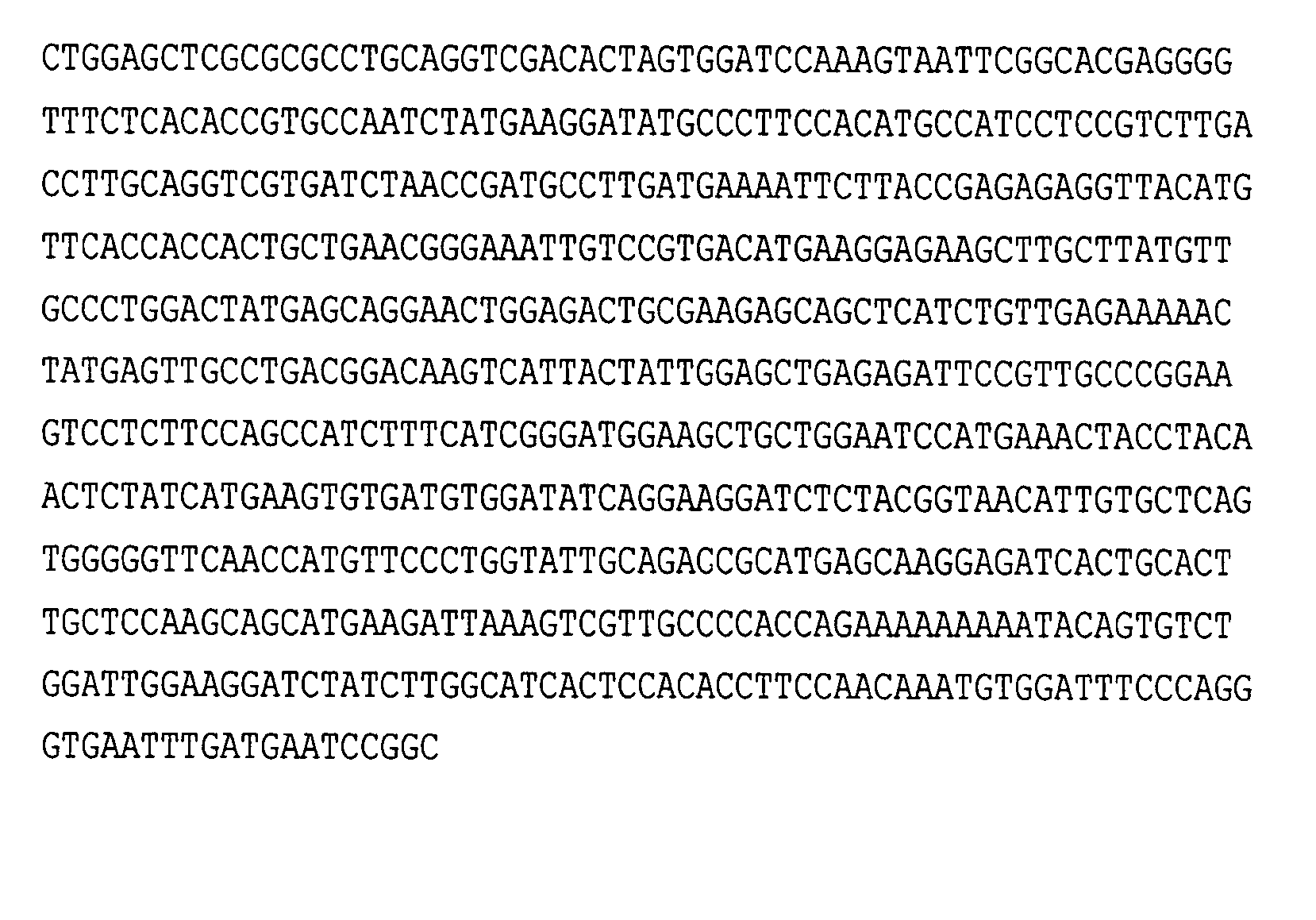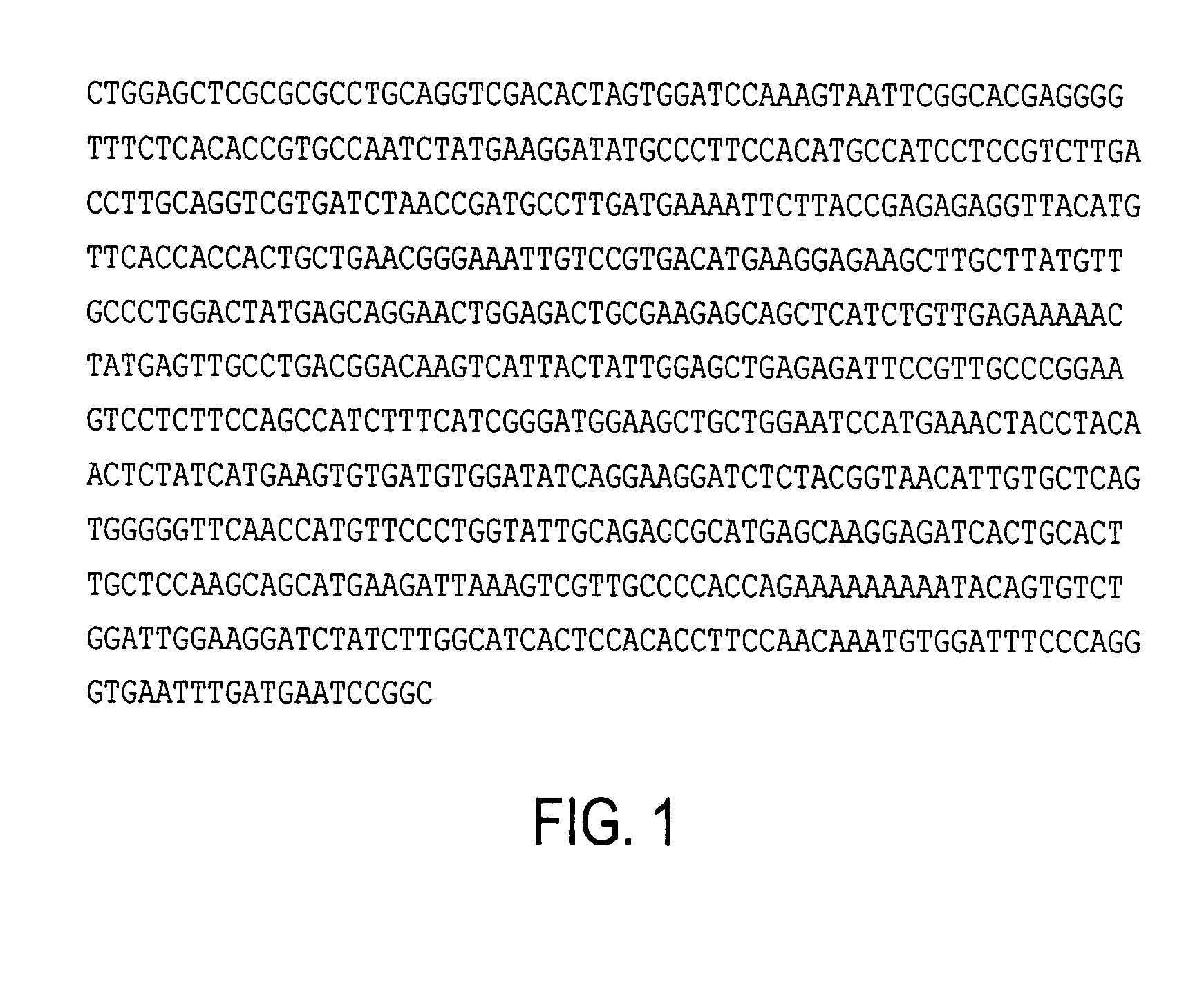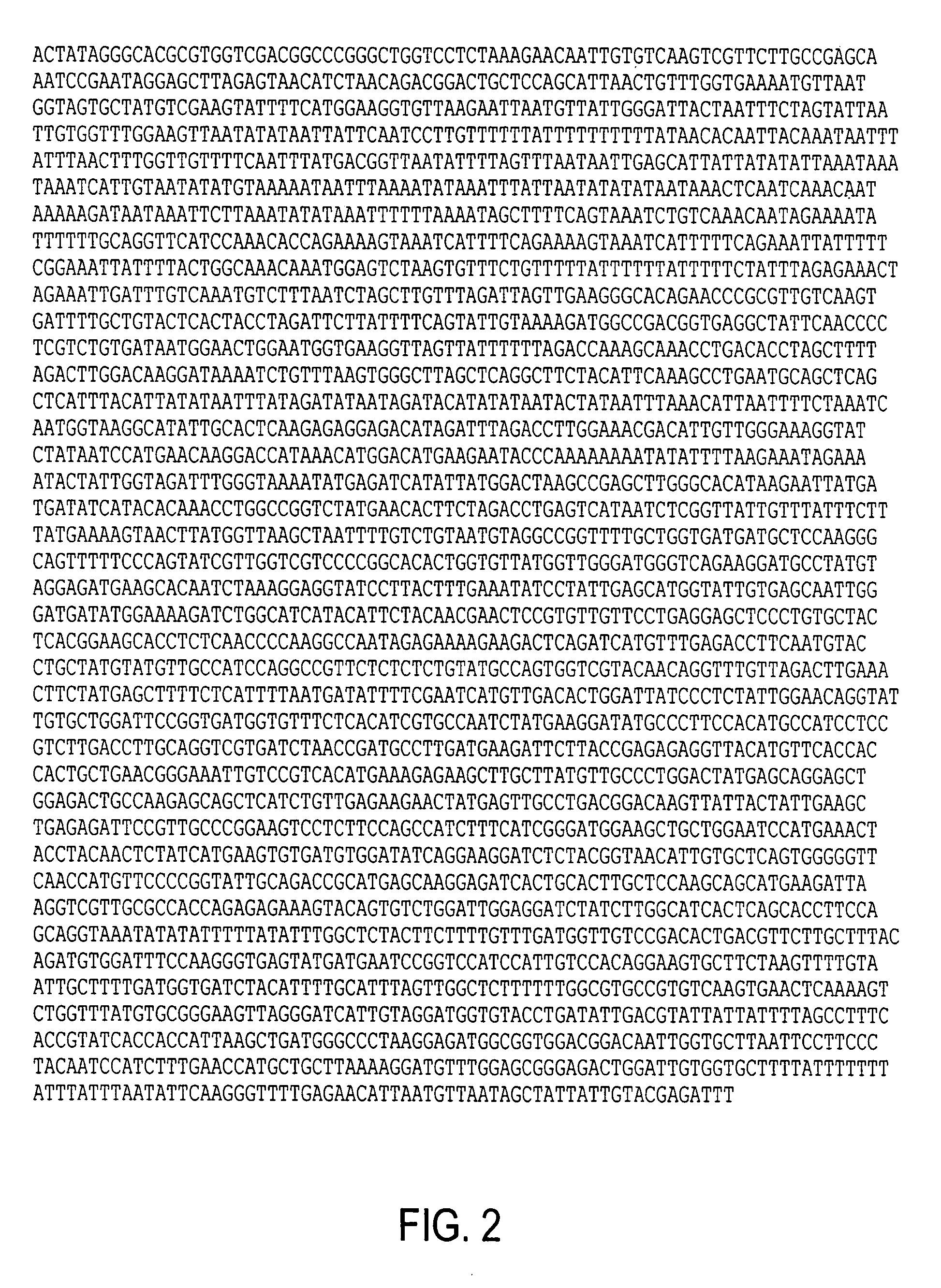Isolation and characterization of a fiber-specific actin promoter from cotton
a technology of promoters and cotton, which is applied in the field of plant molecular biology, can solve the problems of limited potential for further improving fiber properties through classical breeding, and achieve the effect of high fiber quality and yield
- Summary
- Abstract
- Description
- Claims
- Application Information
AI Technical Summary
Benefits of technology
Problems solved by technology
Method used
Image
Examples
example 1
Isolation of Fiber-Specific cDNA Encoding CFACT1 Sequences
[0018]Cotton seeds were surface-sterilized with 70% ethanol for 30–60 seconds and 10% H2O2 for 30–60 minutes, followed by washing with sterile water. The seeds germinated on ½ MS medium on light at 28° C. in a culture room, and cotyledons and hypocotyls cut from sterile seedlings were used as transformation explant materials. Cotton plants were grown in pots for DNA and RNA extraction.
[0019]Total RNA was extracted from young fibers, ovaries, anthers, petals, sepals, leaves and roots of cotton by using the guanidinium thiocyanate method or SV Total RNA Isolation System (Promega). Poly(A)+ RNA was purified by using oligo(dT)-cellulose spin columns from an mRNA purification kit (Pharmacia Biotech). Cotton cDNA was synthesized by using a cDNA synthesis kit (Pharmacia Biotech). Cotton cDNA libraries were constructed by inserting the cDNA fragments into the ZAP express vector (Stratagene).
[0020]Poly(A)+ RNAs from cotton young fiber...
example 2
Isolation and Structural Analysis of the CFACT1 Gene
[0025]Total DNA was extracted and purified from leaves of cotton plants by using the following method. Liquid N2 was added to 4 g of leaf tissues, and the leaves were homogenized thoroughly. 20 ml ice-cold extraction buffer (63 g / L glucose, 0.1 M Tris.HCl (pH 8.0), 5 mM EDTA, 20 g / L PVP-40, 1 g / L DIECA, 1 g / L ascorbic acid, 2 ml / L beta-mercaptoethanol) was added to the homogenized tissues in a 50 ml tube and centrifuged at 2500 rpm for 15 minutes. After removing the supernatant, 10 ml lysis buffer was added to each tube. The resuspended pellets were incubated at 65° C. for 30 minutes. 10 ml chloroform was added to each tube, mixed with the samples and centrifuged at 3500 rpm for 10 minutes. The supernatant was transferred to a clean tube, and chloroform extraction was repeated one more time. The supernatant was transferred to a clean tube, and 0.6 volume isopropanol was added to each tube for DNA precipitation. After centrifuging a...
example 3
Functional Analysis of the CFACT1 Promoter
[0029]To characterize the function of CFACT1 promoter, the 0.8 kb CFACT1 promoter was linked to the GUS gene in pBI101, to construct gene expression vector (FIG. 4). Cotton and tobacco were transformed by Agrobacterium tumefaciens containing the CFACT1 promoter / GUS fusion gene, using the pBI121 vector containing a CaMV35S promoter / GUS fusion as a positive control. The CaMV35S promoter is active in all the tissues of cotton and other plants and is a constitutive promoter [Odell et al., 1985; Ow et al., 1987; McCabe and Martinell, 1993]. A binary vector containing either the CFACT1 promoter / GUS fusion gene or the CaMV35S promoter / GUS fusion control was transferred into Agrobacterium tumefaciens strain LBA 4404. Cotton explants for transformation were obtained from cotton seedlings grown as in Example 1. Tobacco explant material was obtained from tobacco seedlings. Tobacco seeds were surface-sterilized with 70% ethanol for 30–60 seconds and 0.1...
PUM
| Property | Measurement | Unit |
|---|---|---|
| pH | aaaaa | aaaaa |
| pH | aaaaa | aaaaa |
| compatibility | aaaaa | aaaaa |
Abstract
Description
Claims
Application Information
 Login to View More
Login to View More - R&D
- Intellectual Property
- Life Sciences
- Materials
- Tech Scout
- Unparalleled Data Quality
- Higher Quality Content
- 60% Fewer Hallucinations
Browse by: Latest US Patents, China's latest patents, Technical Efficacy Thesaurus, Application Domain, Technology Topic, Popular Technical Reports.
© 2025 PatSnap. All rights reserved.Legal|Privacy policy|Modern Slavery Act Transparency Statement|Sitemap|About US| Contact US: help@patsnap.com



